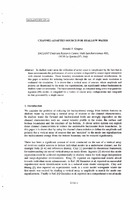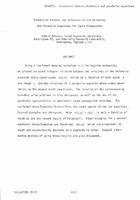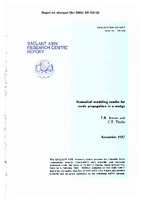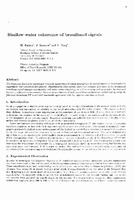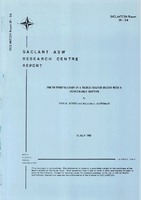Browsing Reprints by Subject "Parabolic equations"
Now showing items 1-5 of 5
-
Channel-adapted source for shallow water
(NATO. SACLANTCEN, 1993/08)In shallow water areas the utilization of active sonar is complicated by the fact that in these environments the performance of active systems is degraded by source signal interaction with channel boundaries. These boundary ... -
Connection between the solution of the Helmholtz and parabolic equations for sound propagation
(NATO. SACLANTCEN, 1975/10)Using a conformal mapping technique in a rectangular waveguide, we present an exact integral relation between the solutions of the Helmholtz equation whose sound speed c(x,y) varies as a function of both depth y and range ... -
Numerical modeling results for mode propagation in a wedge
(NATO. SACLANTCEN, 1987/11)A PE (parabolic equation) code is used to study propagation in a shallow water wedge with a penetrable bottom. Particular attention is given to "wedge modes" that have wave fronts that are arcs of circles centered on the ... -
Shallow-water coherence of broadband signals
(NATO. SACLANTCEN, 1997)The frequency-dependent spatial and temporal variabilities of sound propagation in coastal regions is investigated by ezperiment and numerical simulations. Experimental observations show that temporal coherence of the ... -
Sound propagation in a wedge-shaped ocean with a penetrable bottom
(NATO. SACLANTCEN, 1980/07)Modal cutoff during up-slope propagation in a wedge-shaped ocean is studied using the parabolic equation model; theoretical results are compared with some model tank experiments.
